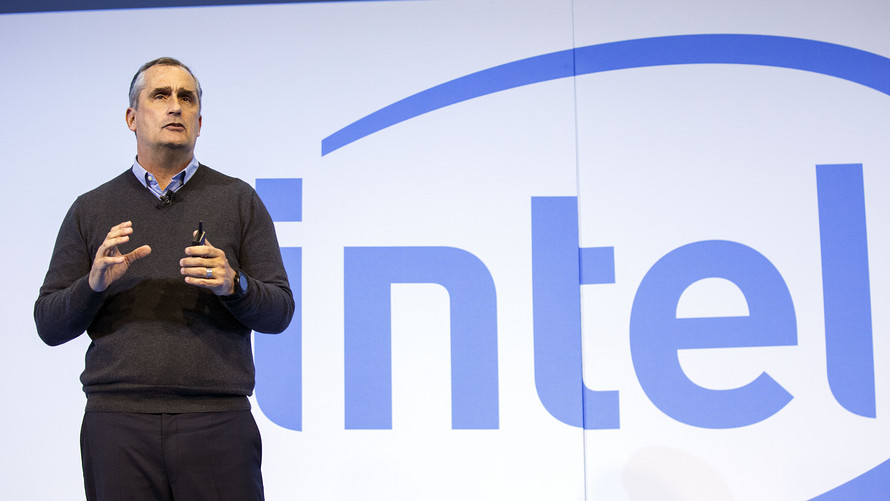
For the first time in its 50-year history, Intel Corp. faces a succession nightmare, and the company will likely have to do something it has never done in response.
Chief Executive Brian Krzanich abruptly resigned Thursday morning after Intel INTC, -2.38% investigations found that he had violated company policy with a past consensual relationship with an employee. Krzanich, a 36-year veteran of the chip maker, leaves in disgrace after a troubled tenure and with few obvious candidates to succeed him waiting in the wings.
“[Krzanich] has a history of taking out anybody who might be a challenger to his authority,” said Rob Enderle, principal analyst at the Enderle Group who has followed Intel for decades. He noted that departures under Krzanich included Stacy Smith, the former president of group manufacturing; Renee James, former COO; Diane Bryant, former head of the data center business; and Kirk Skaugen, previously head of its PC business.
That creates quite an issue for Intel, which has always promoted its chief executives from within. Krzanich was the sixth CEO in Intel history, and all had been Intel lifers. Intel tried to put a positive spin on the news, saying it had a robust succession planning process in place and has begun to search for a permanent CEO both internally and externally.
Intel said the same when Krzanich’s predecessor, Paul Otellini, resigned in 2012, which was news at the time just for Intel’s admission that it would consider outside candidates. Eventually, though, the job came down to three insiders: Krzanich, James and Smith. James eventually left to found chip startup Ampere Computing Inc., while Smith retired at the end of January.
That decision did not turn out so well for Intel, even before the embarrassing end Thursday morning. During Krzanich’s time as CEO, Intel fell behind in manufacturing process technology for the first time, lost its title as world’s top chip maker to Samsung Electronics Co. Ltd., had major security flaws in its core chip architecture exposed by outside researchers (with an embarrassing Krzanich stock sale wrapped in to boot), and fell behind Nvidia Corp. NVDA, -1.98% in artificial intelligence and machine learning while Advanced Micro Devices Inc. AMD, -5.27% surged back into legitimate competition.
“I could write a book on the mistakes he has made since he was CEO,” Enderle said. “This was the one thing [the board] had in their portfolio that didn’t make it look like it was a company problem.”
To right the ship, Intel should seriously consider outside candidates for the first time, possibly seeking to woo James back as a way to maintain some sort of institutional memory. She would also be the first female CEO for Intel, which had been touting its attempts to improve gender and racial diversity under Krzanich.
Enderle, however, said “getting her back is going to be tough,” because of James’s top role at a promising startup. He believes Bryant would be the more likely candidate to return to Intel as CEO, after she left to work on Alphabet Inc.’s GOOGL, -1.24% GOOG, -1.04% Google Cloud team.
Internal candidates were mostly brought in by Krzanich in the last couple of years and do not have much experience at the company. Internal candidates would likely include Venkata Renduchintala, a former Qualcomm Inc. QCOM, -0.07% exec known as “Murthy,” and Chief Financial Officer Bob Swan, who was named interim CEO on Thursday. Swan, who came to Intel in 2016 from eBay Inc. EBAY, -3.18% , is not a chiphead, and Renduchintala is still largely seen as an outsider brought in by Krzanich, which would likely not help his case for promotion among rank-and-file employees.
“While we believe Mr. Swan … has done an admirable job as CFO, given his short tenure at the company particularly around managing investor expectations and costs, but we do not believe he is a logical choice to hold the permanent CEO seat at a hardware and manufacturing giant like Intel,” Cowen analysts wrote in a note Thursday.
Intel needs to find someone who can return the company to the manufacturing supremacy it long held before Krzanich took over while improving morale. Ryan Shrout, principal analyst at Shrout Research and an occasional MarketWatch contributor, believes Intel needs to look for another engineer CEO with actual chip architecture experience, as opposed to manufacturing and process experience like Krzanich.
“At a point where the company has significant external threats from AMD, Nvidia and others, a leader that understands the technological hurdles will be key,” Shrout said in an email. “Business and market decisions are obviously still critical, but the right historical mind-set about how Intel got to where it stands today is necessary.”
No matter who the replacement is, he or she will likely not be in place soon, and will face a host of serious issues at a slow-moving chip giant where and any changes would take plenty of time to show effects.
“New management will continue to wrestle with the same broad issues, namely how to continue to push advantages in a world where they can no longer count on Moore’s Law leadership, how to handle renewed competition, how to thrive in an increasingly heterogeneous world that appears to be moving away from x86, and how to not continue missing the “next big thing,” wrote Bernstein Research analyst Stacy Rasgon. “But this ship won’t steer quickly whoever is running it …“
Krzanich did oversee strong growth in Intel stock, which increased more than 122% after he took over in May 2013 through Wednesday’s close. Intel shares down 2.4% in Thursday trading, but have increased 13.3% so far this year as the Dow Jones Industrial Average DJIA, -0.80% , which counts Intel as a component, has fallen 0.3%.

